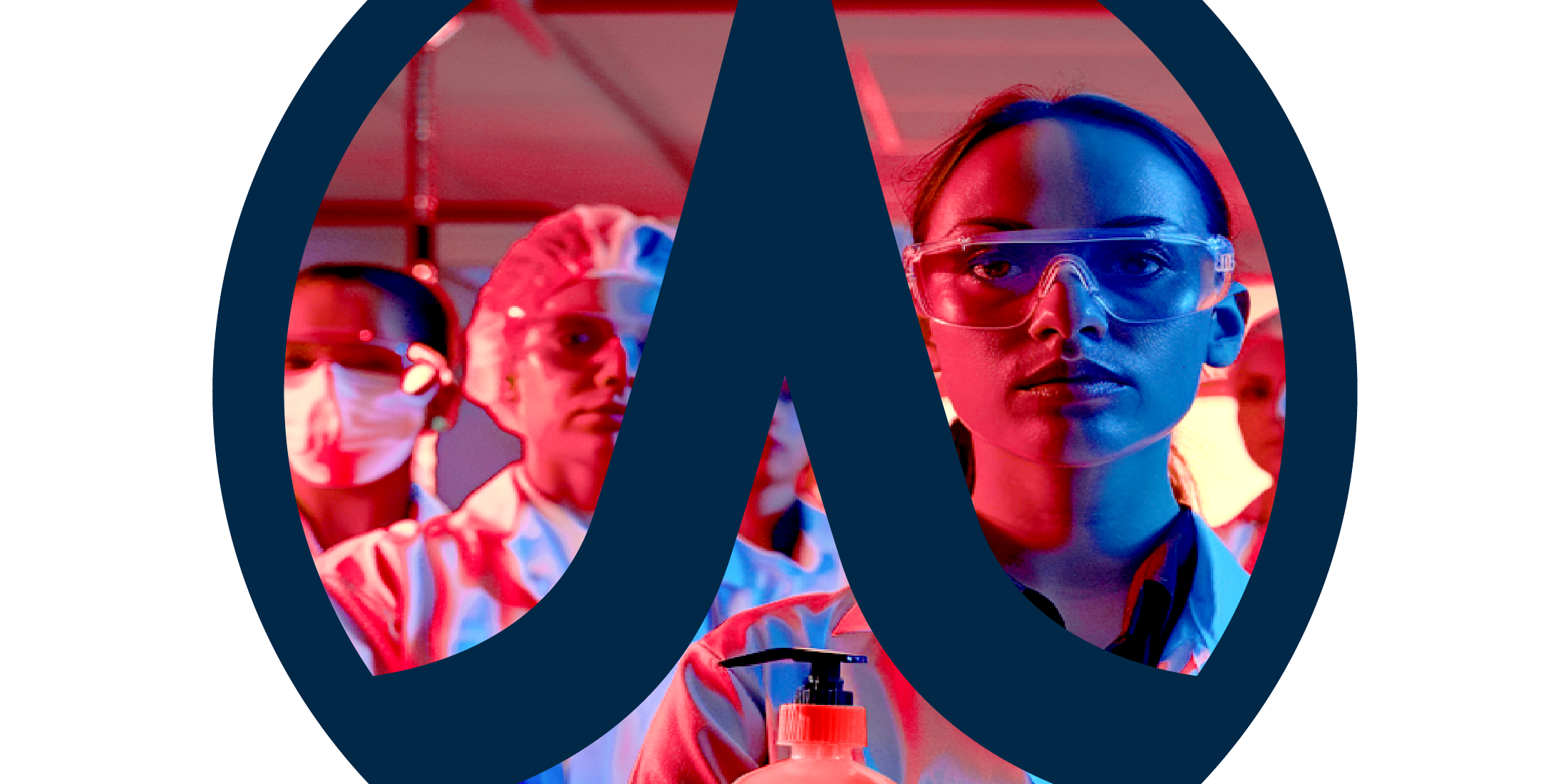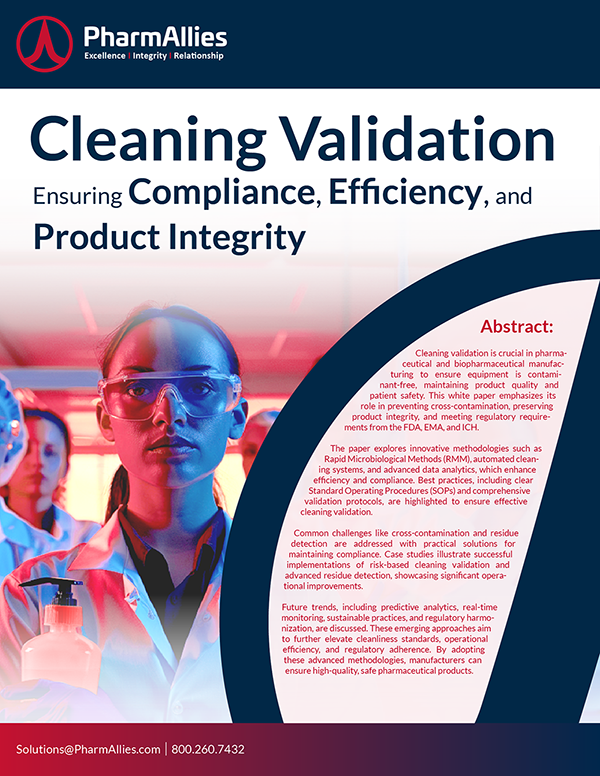Introduction to Cleaning Validation in the Life Sciences Industry
Overview
Cleaning validation is a cornerstone of pharmaceutical and biopharmaceutical manufacturing, ensuring that the cleaning processes used in production meet strict standards to prevent cross-contamination, maintain product quality, and ensure patient safety. Regulatory agencies such as the FDA (Food and Drug Administration), EMA (European Medicines Agency), and ICH (International Council for Harmonisation of Technical Requirements for Pharmaceuticals for Human Use) have established rigorous guidelines to ensure the effectiveness of cleaning processes. This introduction provides a comprehensive overview of cleaning validation, highlighting its importance, regulatory requirements, and best practices. This article is the first in the “Cleaning Validation QuickNotes” series, which will provide a deep dive into each of the key areas introduced in this article over the next few weeks.
Why Cleaning Validation Matters
Cleaning validation is crucial for several reasons.
-
Preventing Contamination: Ensures that residues from manufacturing equipment are effectively removed, preventing contamination of subsequent batches.
-
Maintaining Product Quality: Keeps the integrity and safety of pharmaceutical products intact.
-
Regulatory Compliance: Aligns with Good Manufacturing Practices (GMP) requirements, minimizing the risk of regulatory sanctions and product recalls.
Regulatory Framework for Cleaning Validation
The regulatory framework for cleaning validation is robust and comprehensive, with guidelines provided by major regulatory agencies.
FDA Guidelines
The FDA emphasizes the importance of cleaning validation in its “Guide to Inspections of Validation of Cleaning Processes.” According to the FDA, “cleaning validation is documented evidence that an approved cleaning procedure will provide equipment which is suitable for processing medicinal products” (FDA). The FDA stresses thorough documentation, including the rationale for cleaning procedures, acceptance criteria, and validation protocols.
EMA Guidelines
The EMA provides guidance through its “Guideline on Setting Health-Based Exposure Limits for Use in Risk Identification in the Manufacture of Different Medicinal Products in Shared Facilities.” The EMA states, “the objective of cleaning validation is to prove that cleaning methods are effective and to establish the contamination risks and carryover of product residues and cleaning agents” (EMA). The EMA guidelines emphasize risk assessments, setting health-based exposure limits, and regular revalidation of cleaning processes.
ICH Guidelines
The ICH Q7 guideline on Good Manufacturing Practice for Active Pharmaceutical Ingredients addresses cleaning validation. The ICH Q7 guideline states, “cleaning procedures should be validated, and the level of cleaning needed should be determined based on the characteristics of the API and the process used” (ICH). The ICH emphasizes the need for scientifically justified cleaning procedures and periodic evaluation of their effectiveness.
Key Elements of Cleaning Validation
Cleaning validation involves several key elements, including defining cleaning procedures, setting acceptance criteria, selecting analytical methods, and conducting validation studies.
Defining Cleaning Procedures
Developing detailed standard operating procedures (SOPs) that outline the steps involved in cleaning equipment is the first step in cleaning validation. Procedures should specify the cleaning agents used, cleaning methods, and the frequency of cleaning. Factors such as the solubility of residues, equipment design, and the nature of the products being manufactured should be considered.
-
Cleaning Agents: Identify and document the types of cleaning agents used, their concentration, and the rationale for their selection.
-
Cleaning Methods: Define whether manual cleaning, automated cleaning, or a combination of both will be used. Include detailed steps for each method.
-
Frequency: Establish how often cleaning will be performed based on production schedules and risk assessments.
-
Equipment Design: Take into account the design and material of the equipment to ensure that cleaning agents and methods are compatible and effective.
Setting Acceptance Criteria
Acceptance criteria define the maximum allowable levels of residues on equipment after cleaning. These criteria should be based on a thorough risk assessment, considering factors such as the toxicity of residues, dosage forms, and patient safety.
-
Residue Limits: Establish residue limits for both active pharmaceutical ingredients (APIs) and cleaning agents, ensuring they are below levels that could cause cross-contamination or adverse effects.
-
Safety Margins: Implement safety margins in the acceptance criteria to account for variability in the cleaning process and analytical methods.
-
Visual Inspection: Include criteria for visual inspection to ensure there are no visible residues on equipment surfaces.
-
Scientific Justification: Provide a scientific rationale for the acceptance criteria, including toxicological data and potential routes of exposure.
Selecting Analytical Methods
Choosing appropriate analytical methods is essential for detecting and quantifying residues. Analytical methods should be validated to ensure accuracy, sensitivity, and specificity. Common methods include High-Performance Liquid Chromatography (HPLC), Total Organic Carbon (TOC) analysis, and microbiological testing.
-
HPLC: Suitable for detecting and quantifying a wide range of organic compounds, including APIs and cleaning agents.
-
TOC Analysis: Measures the total amount of organic carbon present, providing an overall indication of cleanliness.
-
Microbiological Testing: Ensures that microbial contamination is within acceptable limits, particularly for sterile manufacturing environments.
-
Validation: Validate analytical methods for parameters such as precision, accuracy, specificity, linearity, and limit of detection.
Conducting Validation Studies
Validation studies demonstrate that cleaning procedures are effective and reproducible. These studies typically involve multiple cleaning cycles and include worst-case scenarios to ensure robustness. Thorough documentation of validation studies, including equipment cleaned, procedures followed, and results obtained is essential.
-
Worst-Case Scenarios: Test cleaning procedures under worst-case conditions, such as maximum residue levels and minimum cleaning times.
-
Multiple Cycles: Perform validation over several cleaning cycles to ensure consistency and reproducibility.
-
Sampling Plan: Develop a sampling plan that includes swab and rinse samples from critical areas of the equipment.
-
Documentation: Document all aspects of the validation study, including the protocol, results, deviations, and corrective actions taken.
Best Practices in Cleaning Validation
Implementing best practices helps ensure the effectiveness and compliance of cleaning processes.
Risk-Based Approach
Adopting a risk-based approach helps prioritize resources and focus on critical areas. This involves conducting risk assessments to identify potential contamination risks and setting appropriate acceptance criteria.
-
Risk Assessment Tools: Use tools such as Failure Modes and Effects Analysis (FMEA) or Hazard Analysis and Critical Control Points (HACCP) to assess risks.
-
Critical Control Points: Identify and monitor critical control points in the cleaning process to mitigate risks.
-
Data-Driven Decisions: Base decisions on data from risk assessments, historical cleaning performance, and product characteristics.
-
Dynamic Approach: Continuously update risk assessments as new information becomes available or changes occur in the manufacturing process.
Periodic Revalidation
Cleaning procedures should be regularly revalidated to ensure their continued effectiveness. Revalidation should be conducted whenever changes are made to the cleaning procedures, equipment, or products being manufactured.
-
Change Control: Implement a change control process to evaluate the impact of changes on cleaning validation.
-
Scheduled Revalidation: Establish a schedule for periodic revalidation based on product risk and cleaning process complexity.
-
Trigger Events: Identify trigger events that necessitate revalidation, such as new product introductions or equipment modifications.
-
Documentation: Maintain detailed records of revalidation activities, including protocols, results, and any corrective actions taken.
Training and Documentation
Ensuring that personnel involved in cleaning validation are adequately trained is crucial. Training programs should cover the principles of cleaning validation, SOPs, and analytical methods. Thorough documentation of cleaning validation activities, including validation protocols, reports, and records of cleaning activities, is essential.
-
Training Programs: Develop comprehensive training programs that include theoretical knowledge and practical skills.
-
Certification: Consider certification programs for personnel to ensure they meet competency standards.
-
SOPs and Manuals: Provide detailed SOPs and training manuals to guide personnel in cleaning validation activities.
-
Record Keeping: Implement robust record-keeping practices to ensure traceability and accountability.
Continuous Improvement
Continuous improvement involves regularly reviewing cleaning procedures and validation results to identify areas for improvement. Implementing corrective and preventive actions (CAPA) based on these reviews helps enhance the effectiveness of cleaning processes.
-
Performance Monitoring: Monitor cleaning performance through regular audits, inspections, and analytical testing.
-
Feedback Loop: Establish a feedback loop to capture and address issues identified during routine cleaning activities.
-
Root Cause Analysis: Conduct root cause analysis for any deviations or failures in the cleaning process.
-
Improvement Plans: Develop and implement improvement plans based on findings from reviews and audits.
Conclusion
Cleaning validation is a fundamental aspect of pharmaceutical and biopharmaceutical manufacturing that ensures the safety and quality of products. By defining cleaning procedures, setting acceptance criteria, selecting analytical methods, and conducting validation studies, manufacturers can prevent cross-contamination, maintain product quality, and protect patient safety. Adhering to regulatory guidelines provided by the FDA, EMA, and ICH helps ensure compliance and the effectiveness of cleaning processes. Implementing best practices such as a risk-based approach, periodic revalidation, and continuous improvement further enhances cleaning validation effectiveness. By understanding and implementing the principles of cleaning validation, you can ensure high standards of cleanliness and compliance, ultimately leading to safer and more effective pharmaceutical products. If you’re involved in the life sciences industry, staying informed about the latest cleaning validation practices and regulatory updates is crucial. Connect with me for more insights and expert guidance on maintaining excellence in your manufacturing processes.



